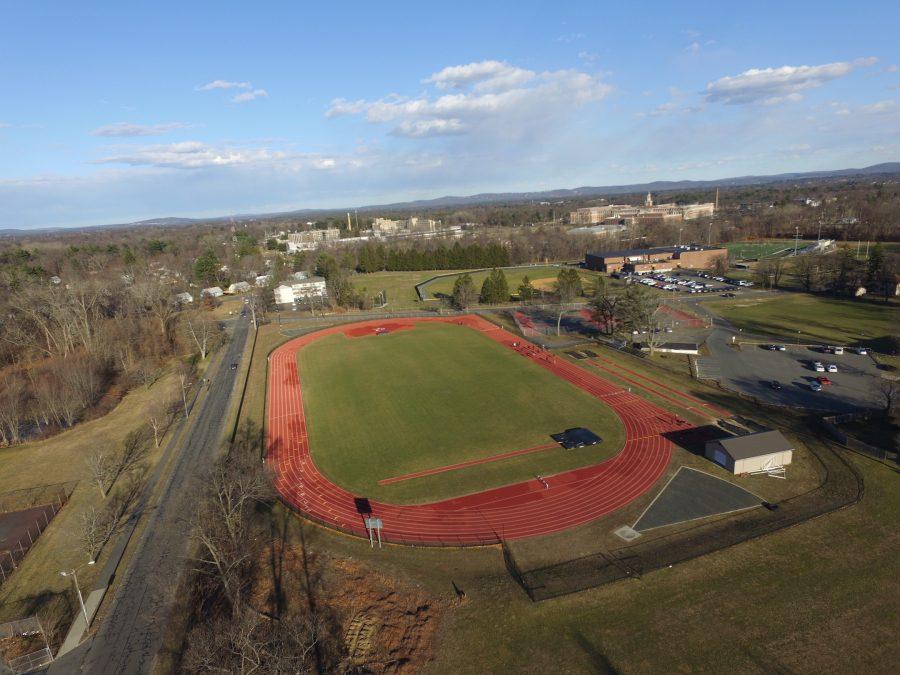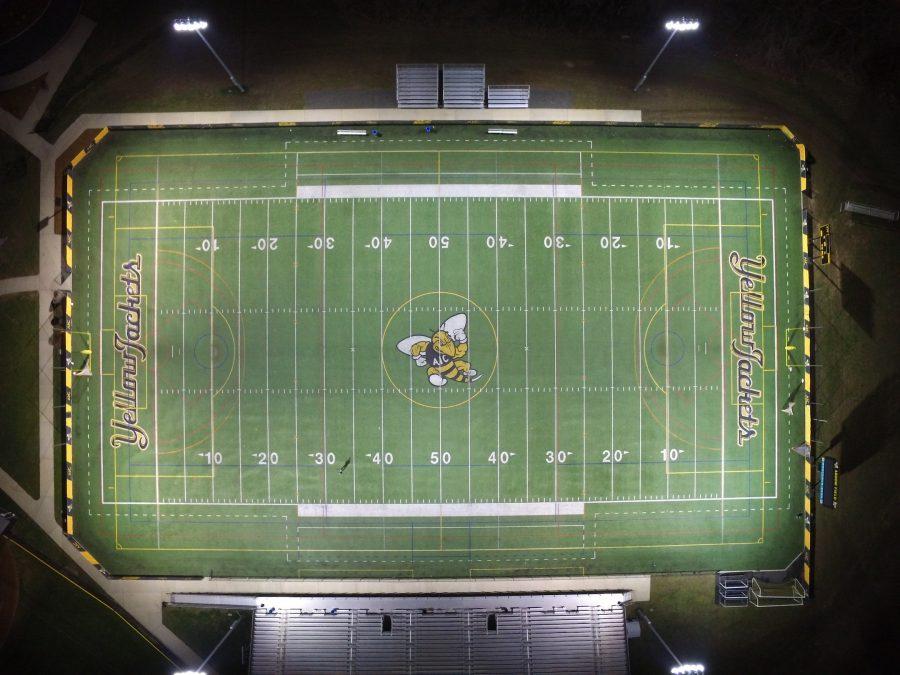Drones: forward and upward innovations
An aerial view of AIC, courtesy of Zach Bednarczyk’s drone.
March 28, 2017
Consumer drones have become increasingly popular over the past couple years. And now, some are not only coming, but are already flying on campus both in and outside the classrooms.

An aerial view over AIC at night looking towards Downtown Springfield, courtesy of Zach Bednarczyk’s drone.
Broken down into two categories, consumer drones are either professional or hobby. Hobby drones don’t cost nearly as much as professional, but are good for starting out. Typically, they have a relatively short range of a couple hundred feet, are very lightweight and small. Professional drones on the other hand are for more experienced pilots.
Rosa Giberti, a sophomore at AIC, owns a drone of her own: a small, very lightweight nonprofessional drone that is easy to tote just about anywhere.
“I like that it’s lightweight. It makes it very easy to carry around,” Giberti says.
Although not up to professional standards, the drone is much more portable and slightly more agile in smaller spaces. Not to mention it can also do flips.
“It’s very durable so when it comes to crashing, it won’t break easily,” she added.
Inside the classroom, the Communications department is looking to purchase a professional drone of their own for photography and videography purposes.
The moving force behind purchasing a drone is Professor John Nordell, who teaches the photography classes on campus.
“It would be great to try in class, as we try to simulate real world experiences,” Nordell said. “Using these experiences, students can use the drone to get professional aerial imaging and will help in future careers at AIC.”
Compared to Rosa’s drone, the DJI Phantom 4 is bigger, and not the easiest to carry around. It does however boast a longer flight time, a much higher quality camera, and a stabilization gimbal for the camera. The plan for students is to use the drone in course work.

An aerial view over the AIC track, courtesy of Zach Bednarczyk’s drone.
Part of the reason consumer drones have become so successful and popular is due to smartphones. A decent $100 drone can connect to a smartphone and either be controlled by it or be viewed the camera on it. This is actually in part with the smartphone and tablet race to make batteries last longer. Otherwise, most consumer drones wouldn’t fly nearly as long as they do today.
There are words of caution to live by when it comes to drones.
Just because it’s cool, doesn’t mean go out and buy one. Drones are not cheap to repair if they crash, and can cause serious injury if improperly flown.
Privacy invasion is another big issue at the moment with drones. Although most have wide angle cameras and can’t see details far away, if flown close enough can invade people’s privacy and is considered a crime.
One thing seems to be sure: drones want to make their way down into educational areas.
“In photography and art classes, they are able to get views that are impossible to see without,” says Giberti.
“The drone will fit in with the Art and Innovation Lab, which brings in new technology,” added Nordell. “As technology changes, the students will as well.”




